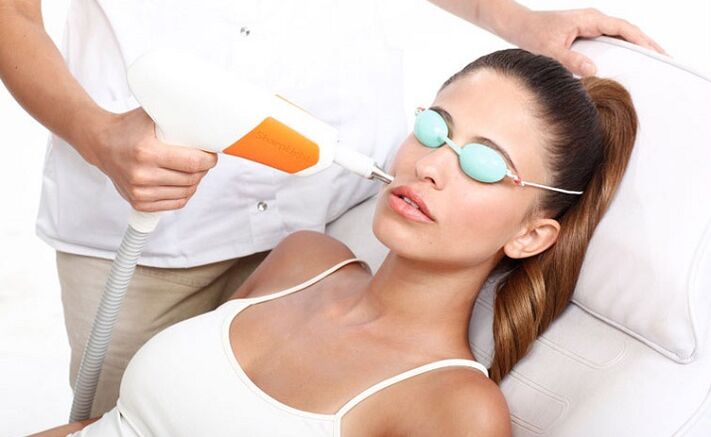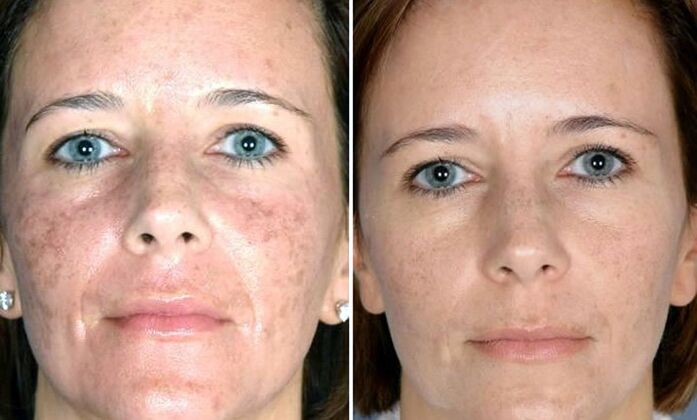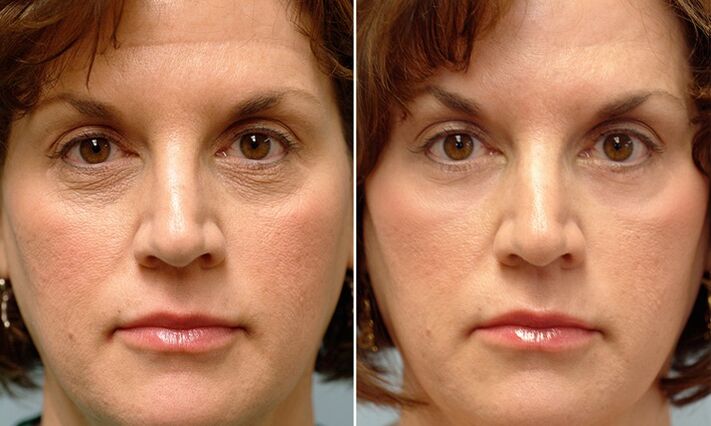From Cleopatra to today, there is not a representative of women who do not want to prolong their youth and skin beauty. Modern medical science is constantly amazed with innovations in the field of cosmetology, offering a variety of anti-aging surgery and methods.
Particularly popular are techniques that allow you to get rid of the visible signs of aging without the use of a scalpel or Botox injections. Fractional laser skin rejuvenation is currently the fastest and safest way to fight skin aging.

What is fractional laser and how it "rejuvenates"
When the laser beam hits the skin, the burn spreads with depth. The active healing (regeneration) process begins, delivering the desired aesthetic effect. This procedure is also known in cosmetology as laser resurfacing.
If the same laser is divided into multiple microscopic beams, the so-called fractional laser beam is obtained. Such a beam would no longer act on the skin as a total mark but as an intermittent microscopic network. Burns after fractional laser pyrolysis are found in the form of a large number of fine spots between intact skin areas. This significantly reduces procedure injury (and soreness) and allows the skin to recover more quickly.
After exposure to the laser, intact, healthy skin cells begin to actively divide, with the formation of collagen and elastin, bringing elasticity and youthfulness to the skin.
Types of fractional photothermal
Ablative
Under the action of laser radiation, water evaporates from the tissues and forms a "open" microscopic wound, surrounded by damaged (burned) cells.
During the healing process, a pronounced lifting effect will occur, but there is a risk of infection entering the deep layers of the skin.
Do not dissect
Radiation is used, making the epidermis intact, so that evaporation from tissues and formation of "open" wounds does not occur. The burn forms and heals under the epidermis, so there is no risk of infection, but the rejuvenating effect of the procedure is less pronounced.
Aesthetic surgeon chooses an individual method of rejuvenation, depending on the condition and type of skin.
Effects and Benefits of Pyrolysis by Fractional Laser
The main difference between engineering and all other processes is the optimum balance between safety and efficiency.
Key pluses:
- the ability to affect any part of the body (including the chest, neck, eyelids);
- a variety of indications;
- physiological (the area of lesion is only 20% of the total laser-treated area);
- short cure time (2-7 days);
- method of anesthesia - application;
- the ability to use it for people with darker skin (since it does not cause hyperpigmentation);
- duration of results (from one year to several years).
The downside is insufficient knowledge of all the aspects of fractional lasers' effects, as the technology itself has appeared recently.
Indications for fractional rejuvenation:
- wrinkles (in any depth and location);
- reduced skin elasticity;
- Expanded pores;
- skin pigmentation;
- acne;
- spider veins;
- scarring (postoperative, residual after acne);
- stretch marks (striatum), including on the skin of the mammary glands.
Features of the conduct of fractional laser pyrolysis
A few days before the photothermal procedure, the esthetician may prescribe (if indicated) an antibacterial or antiviral drug in a prophylactic dose.
On the fractional rejuvenation day, it is necessary to completely exclude physical activity, smoking and drinking.
Before the procedure, the skin is cleaned and treated with a special anesthetic cream. In some cases, no anesthesia is required.
The effect of the laser beam is said to be "tingling" or "tingling". The duration of the procedure (from a few minutes to an hour) and their numbers are selected individually. After laser treatment, a gentle lotion is applied to the skin.
Next skin care:
- Moisturize the skin with a special treatment 2-3 times a day (for 2 weeks);
- protect skin from UV radiation for 2 months (do not go to the solarium, use a sunscreen with a protection factor of at least 30);
- Do not use peeling and exfoliating (within 2 weeks);
- do not use cosmetics containing salicylic acid and retinol (within 2 weeks);
- do not wear compressed lingerie for several days (if fractional photothermal is performed on the body);
- restriction (exclusion) of smoking and alcohol during treatment (decreased regenerative functions of the skin).

On average, the rehabilitation time lasts up to 3 days after fractional laser pyrolysis and up to 7 days after pyrolysis.
Skin changes after the procedure
For 1-3 days after exposure to the intense laser, the skin may experience redness, discomfort and slight swelling. If this condition is subjective to poor tolerance, it is possible to use pain relievers and cool skin.

After a few days, copper skin color (the tan effect) may appear, last up to 2 weeks, and go away on its own. Within 5-7 days of fractional rejuvenation, the skin is dry and flaky.
Undesirable consequences and contraindications to photothermal processes
If improper skin care follows the procedure, fails to comply with recommendations or technical errors during laser treatment, the following complications may occur:
- redness of the skin that persists for more than 3 days;
- edema at the site of contact, lasting more than 2 days;
- exacerbation of herpes infection (if it has previously been in the treated area);
- infection (streptococcal appearance);
- erosion, burns in the affected area;
- determine bleeding;
- hyperpigmentation of the skin.
To avoid undesirable consequences, the Fractional Laser Fractional rejuvenation procedure is carried out after examination and excludes possible contraindications.
Absolute contraindications:
- pregnancy and lactation;
- a tendency to keloid formation;
- acute infectious process (including herpes);
- cancer pathology;
- condition after radiation therapy, chemotherapy;
- epilepsy;
- significant disturbances of the immune system;
- taking medications containing retinoids;
- psoriasis (atopic dermatitis) during exacerbations.
Relationship:
- kidney disease;
- Diabetes;
- inflammation at the site of exposure;
- patient does not want to follow the recommendations of a cosmetologist;
- mental illness;
- an allergy to anesthetics;
- autoimmune diseases;
- tanned skin (visit the solarium in the previous month);
- recent rejuvenation processes (affecting deep layers of the skin - within the past three months, superficial - within 10 days).
Reviews of laser segment rejuvenation and images of patients from the "before" and "after" series often undermine the efficacy and low vulnerability of this youth preservation approach.

Remember!This procedure can only be performed by specialists (surgeons or dermatologists) who have been trained and authorized to work with laser equipment. The competence of a doctor is the key to your beauty!














































































